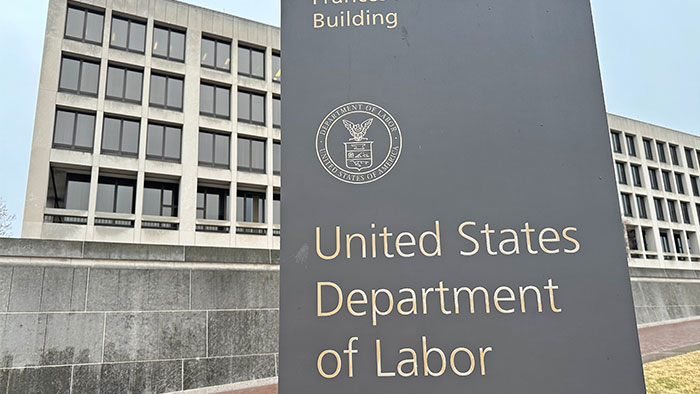CHEVRON OVERRULED: ENDING THE “DIZZYING BREAKDANCE”
- By [ Larissa Whittingham ]
- 07/01/2024

The Court characterized Chevron as “an impediment, rather than an aid” to courts’ basic job of statutory interpretation. The Court further stated that the “deference that Chevron requires of courts reviewing agency actions cannot be squared” with the Administrative Procedure Act and that neither Chevron nor its progeny “attempted to reconcile [Chevron’s] framework with the APA.”
Besides the inconsistency with the APA, the Court observed that experience has “shown that Chevron is unworkable,” saying: “Because Chevron in its original two-step form was so indeterminate and sweeping, we have instead been forced to clarify the doctrine again and again. Our attempts to do so have only added to Chevron’s unworkability, transforming the original two-step into a dizzying breakdance.” Slip Op. at 32 (emphasis added).

What does this mean for retailers subject to federal agency actions?
- First, more agency actions may be challenged in court. Now that a court will essentially exercise de novo review of agency actions implicating a statute’s text, more lawsuits are likely to be filed. While the tide of regulatory challenges has been growing as Chevron’s pull has been ebbing, the amount of litigation will likely increase as challengers identify ways to distinguish agency action from statutory delegation. This could cut for and against retailers, depending on the issue.
- Second, the resolution of lawsuits challenging agency actions will be more permanent. Chevron deference gave incoming presidential administrations wide latitude to adjust the regulations of prior administrations. Under Loper Bright, new administrations will have less regulatory wiggle room to adjust existing regulations once a court has interpreted the underlying statute. While today’s opinion specified that courts can look to executive guidance to inform their analyses, it was clear that agency views cannot supersede the court’s independent judgment. Again – this could cut both for and against retailers, depending on the issue.
- Third, brush up on your tools of statutory construction and hope your Members of Congress do the same! The way judges interpret statutes is very different from how most agencies have performed this task in the 40 years of Chevron deference. Courts tasked with interpreting ambiguous statutes are going to be dealing with more varied statutory construction tools than past years. This is important for litigators but perhaps more important for legislators. Congress will need to write legislation that more clearly articulates what they are empowering agencies to do in order to obtain the intended effect of the law.
Finally, the Court made clear that today’s ruling does not “call into question prior cases that relied on the Chevron framework.” These are still subject to stare decisis despite the “change in interpretive methodology.” So, none of the judicial decisions resolving statutory questions using Chevron will go out the window today. Many of the issues reflected in these cases, however, are bound to be challenged as soon as creative plaintiffs find a vehicle to bring such a case.
Today’s decision in Corner Post v. Board of Gov. makes the possibility of fresh challenges to issues decided under the old Chevron framework especially likely – as now essentially any newly formed business has six years from formation to bring a lawsuit under the APA challenging an existing rule that governs it. As with the points above, this could cut both for and against leading retailers depending on the issue. On one hand, retailers may want to challenge prior agency actions bad for merchants (such as the inclusion of certain costs improperly incorporated in permissible debit interchange fees, the propriety of which is the merits question implicated in Corner Post). On the other hand, the potential for disruption of longstanding federal regulation can both put leading retailers with robust compliance programs at a disadvantage and open the door for a patchwork of state regulatory action.
Bonus Thoughts to Consider – Agency Review Past, Present, & Future
For those who want to think about what may be to come: it’s worth a look at the concurrence by Justice Thomas. While the Opinion of the Court contains language around constitutional principles, Chief Justice Roberts was careful to ground the foundation of overturning Chevron in the text of the APA, saying: “The deference that Chevron requires of courts reviewing agency actions cannot be squared with the APA.” Justice Thomas however grounds disagreement with Chevron in the Constitution’s separation of powers guarantee. Why does this matter? Under the APA framework, Congress could legislate its way to a different result if it ever decided to do so by amending the APA. If that were to happen, it is unclear at the moment whether a majority of the Court would allow such a delegation of deference to stand.
On the other end, Justice Kagan (joined by Justices Sotomayor and Jackson) claims the majority turned “itself into the country’s administrative czar” and called the opinion “Hubris Squared” (referring to both its interpretation on the merits and decision to overturn Chevron in the face of stare decisis). She acknowledged that Congress often leaves ambiguities or gaps in statutes and asserted that the legislative branch would prefer those gaps filled by politically accountable agencies with expertise in the relevant areas. Rebutting the APA framework of the Opinion of the Court, Justice Kagan said “not a single Justice so much as floated [the majority’s] view of the APA” in the years after its enactment. Quoting Chevron (saying “Judges are not experts in the field, and are not part of either political branch of the Government.”), the Dissent claims that those were the days, the Court “knew what we are not” but that the majority “does not respect that judgment.”
Just as most did not expect Chevron to evolve as it did forty years ago, the concurrences and dissents are a good reminder that we do not know how administrative agency review will look forty years from now as the three branches evolve.

